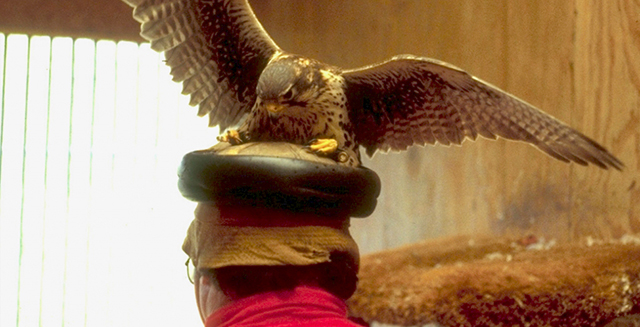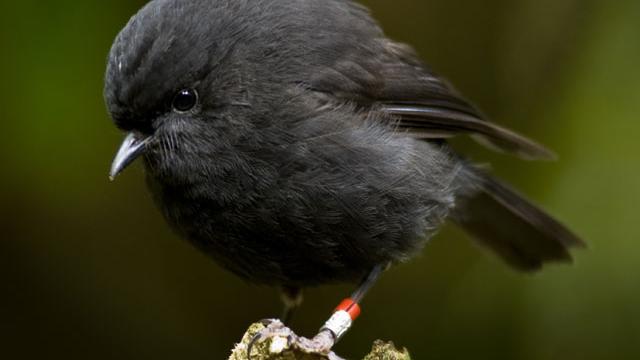Have you ever heard of a copulation hat? Well, perhaps we should talk about human-assisted bird reproduction for a minute.
When the pesticide DDT threatened peregrine falcon populations in the 1970s, conservationists donned leather caps on which male birds in a breeding program would land to, well, copulate. The ejaculate was collected for artificial insemination, and the falcons have since experienced an incredible recovery. Today, copulation hats are still sold to falconers who want to breed their finicky domesticated birds. Here are even some tips for a DIY version.
We’ll come back to the copulation hat.
Over in New Zealand, the black robin has made an even more remarkable recovery — possibly one of the biggest success stories in the history of conservation. You have to understand just how dire it was in 1980, when only five black robins remained in the entire world. All of the approximately 250 black robins alive today are descended from just two birds, named Old Blue and Old Yellow.
Conservationists have gone every length to save the black robin, from tricking the birds into laying extra eggs to — in at least one successful case — mouth-to-beak resuscitation. In comparison, the technique central to helping the black robin population rebound — simply nudging their eggs toward the center of the nest — seemed like a small act, yet it was one that nearly doomed the species.
Researchers in the ’80s noticed that many female birds had a peculiar habit of laying eggs on the rim of their nests, and that those eggs were never incubated and thus never hatched. So they gave the eggs a nudge to save them. More birds hatched, but the “rim egg” behaviour spread throughout the population, creating a subpopulation that could not survive without human intervention. In other words, all subsequent generations of black robins risked becoming dependent upon their eggs being nudged back to the center of the nest by human beings, like clockwork mechanisms controlled by another species.

A team of scientists last month created the family tree for every black robin from 1980 and 1989 to show how rim egg-laying was passed down through generations. (Red marks rim-laying females.) Under natural selection, the birds from rim eggs would have never hatched to pass on the gene variant for rim egg-laying behaviour. Inbreeding, in which a rare gene variant becomes common, is often a problem for rare animals, bedeviling pandas and white tigers too.
There is a happy ending to the black robin story, because humans eventually stopped managing black robin nests so closely. Natural selection was allowed to do its thing, and the rim egg behaviour finally dropped. It’s hard to say whether black robins would have rebounded if those early rim eggs had not been saved, but it could also easily have gone too far in the other direction — the behaviour spreading like a fatal programming error dooming black robins to be irreversibly dependent on humans. The “black robin just narrowly escaped such a fate,” write the study’s authors.
Conservation is not domestication — its ultimate goal should be that a species can survive on its own — but a gradient exists between the two, rather than a straight and obvious line. You can look at whooping cranes, for example, which are taught to migrate by humans in white hooded suits operating an ultralight plane, and wonder exactly how “wild” the birds are.

A copulation hat, via an interview with Jon Mooallem at The Rumpus
The copulation hat is one of the funnier contraptions in the annals of human-assisted bird reproduction — and an example of the extraordinarily unnatural lengths we will go to save an endangered species. Perhaps such actions are necessary to help along a species in the most critical moments, but, eventually, humans have to stop donning funny leather hats and stop nudging eggs, or we’ll just end up surrounded by a world of pet birds. [Not Exactly Rocket Science]
Picture: Massaro et al PLoS ONE
